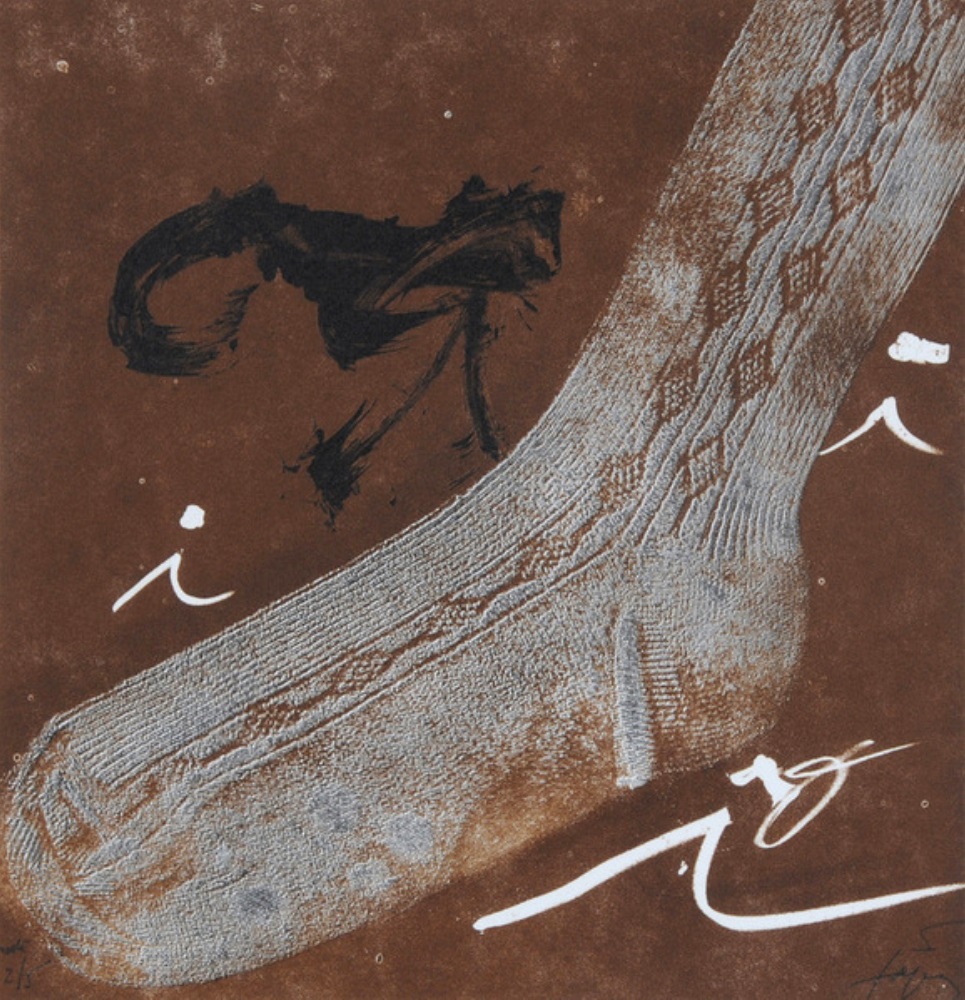Embossed lithograph on paper by Antoni Tapies – Titled: Sock, 1980
Original limited edition fine art print by Antoni Tapies – Titled: Calcetín, 1980 (Sock)
Embossed lithograph on paper signed lower right in pencil by artist and numbered lower left. One of an edition of 5 signed and numbered lithographs
Dimensions: 34 x 33 cm – 13.4 x 13 in
Literature: Galfetti – Homs 749.
Antonio Tapies. Obra grafica. Graphic Work. 1979-1986 (Catalogue raisonne of the prints of Antoni Tapies) Galfetti, Mariuccia and Nuria Homs.
Price: For pricing or more information on artwork or artist contact gallery.
Clic here to see more fine art prints>>
Clic here to see more planographic prints >>
Clic here to see more Intaglio printings >>
See more artworks and bio of TAPIES, Antoni >>
Antoni TAPIES (1923 – 2012)
Antoni Tàpies i Puig, 1st Marquess of Tàpies; born on 13 December 1923 and died on 6 February 2012; He was a Spanish painter, sculptor and art theorist, who became one of the most famous European artists of his generation.
The son of Josep Tàpies i Mestre and Maria Puig i Guerra, Antoni Tàpies Puig was born in Barcelona on 13 December 1923. His father was a lawyer and Catalan nationalist who served briefly with the Republican government.
Due to this, Tàpies grew up in an environment where he was very much exposed to cultural and social experiences of leaders in the Catalan public life and its republicanism. His maternal grandmother also exposed him to this world with her great involvement in civil and political activities. Tàpies was first introduced to contemporary art as he entered secondary school in 1934. He saw a famous Christmas issue of the magazine, D’ací i d’allà, which contained reproductions of works by artists such as Duchamp, Braque, Kandinsky, and Picasso.
*In 1974 he made a series of lithographs called Assassins and displayed them in the Galerie Maeght in Paris, in honour of regime critic Salvador Puig Antich’s memory.*
*In Tàpies’s graphic work, he is interested with the materiality of a piece. He gravitates toward avoiding traditional processes and uses everyday imagery such as handprints and footprints as his subject matter. Tàpies enjoyed working with the concepts such as “high” art and “low” art. He uses embossing, flocking, and indentations with carborundum to help in defining the flatness of printmaking. He involves much painting, drawing, and collage in his prints as well as a number of earthy materials such as straw, sand, and dirt. To achieve the innovative techniques, Tàpies worked with specific publishers and printmakers who were inspired by his unique, groundbreaking ideas. His primary publishers are La Polígrafa in Barcelona, Erker-Presse in St. Gallen, and Galerie Maeght in Paris, Zurich and Barcelona. It was very important to Tàpies for his work to reach a wider range of people. His graphic work was therefore quite important to him in this aspect.*
#biography – Wikipedia
Date:
February 9, 2022
